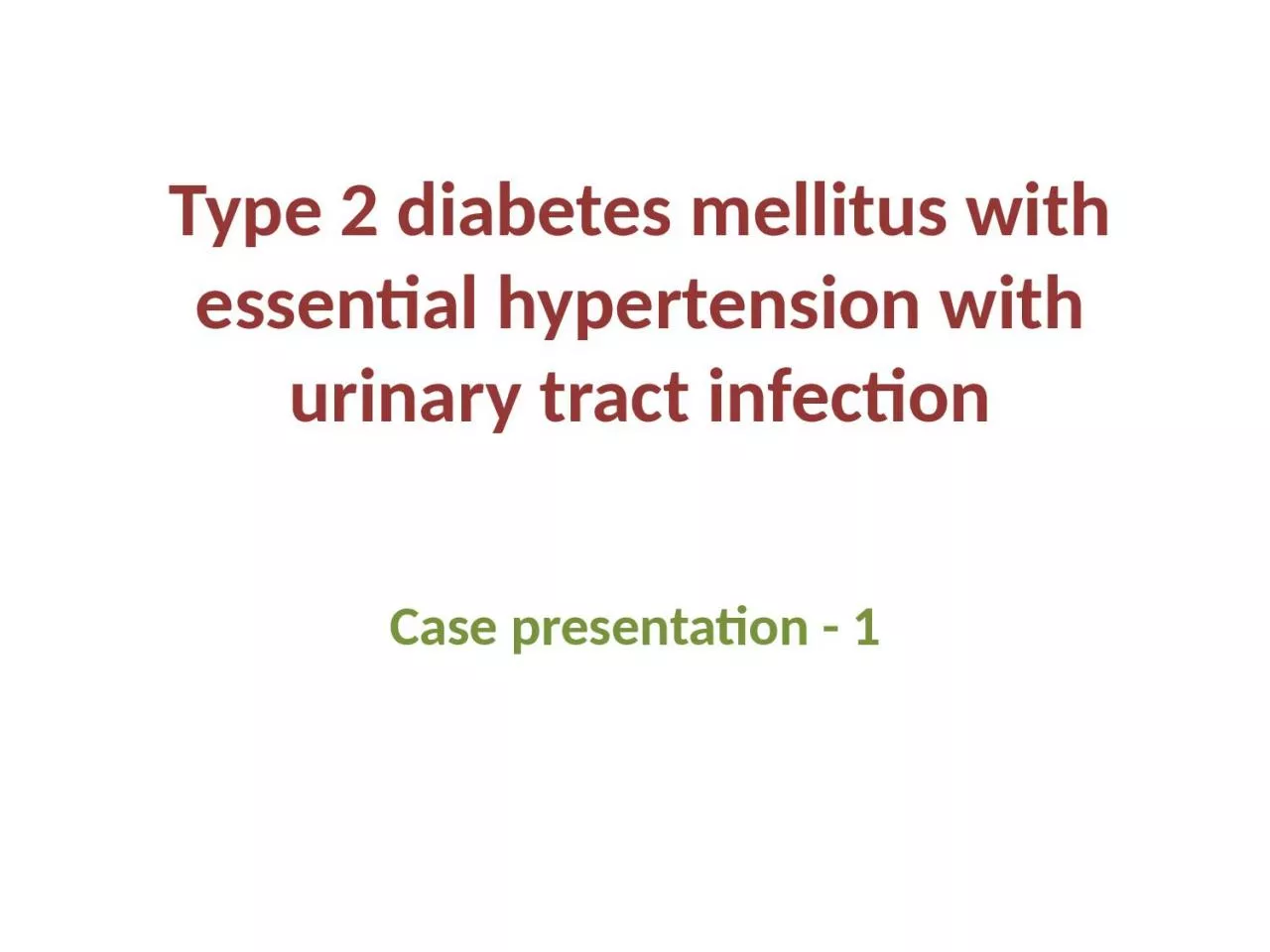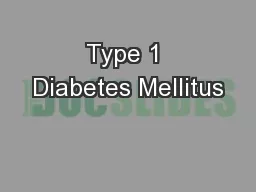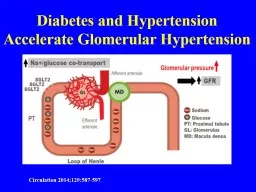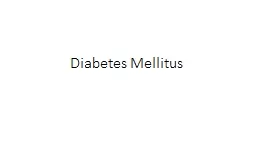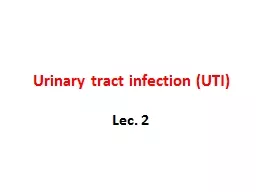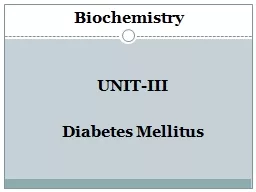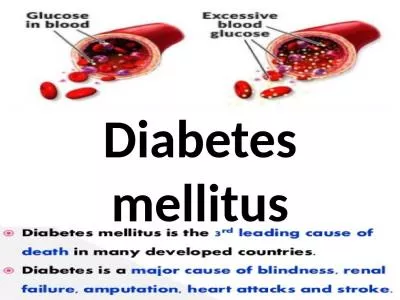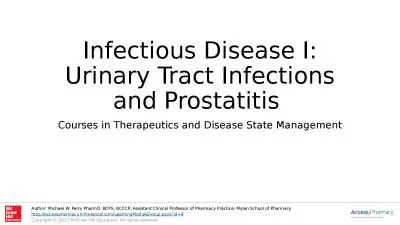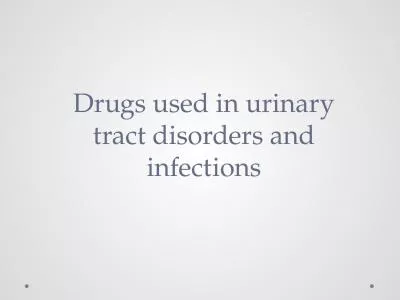PPT-Type 2 diabetes mellitus with essential hypertension with urinary tract infection
Author : amey | Published Date : 2023-11-19
Case presentation 1 Patient name In patient no Age Gender Date of Admission Date of Discharge No of days Kasturi More 274882012 60 Female 141212 211212 8 days
Presentation Embed Code
Download Presentation
Download Presentation The PPT/PDF document "Type 2 diabetes mellitus with essential ..." is the property of its rightful owner. Permission is granted to download and print the materials on this website for personal, non-commercial use only, and to display it on your personal computer provided you do not modify the materials and that you retain all copyright notices contained in the materials. By downloading content from our website, you accept the terms of this agreement.
Type 2 diabetes mellitus with essential hypertension with urinary tract infection: Transcript
Download Rules Of Document
"Type 2 diabetes mellitus with essential hypertension with urinary tract infection"The content belongs to its owner. You may download and print it for personal use, without modification, and keep all copyright notices. By downloading, you agree to these terms.
Related Documents

